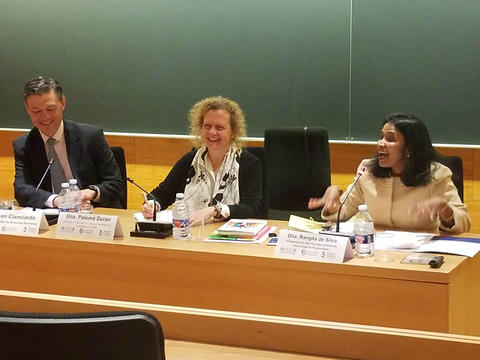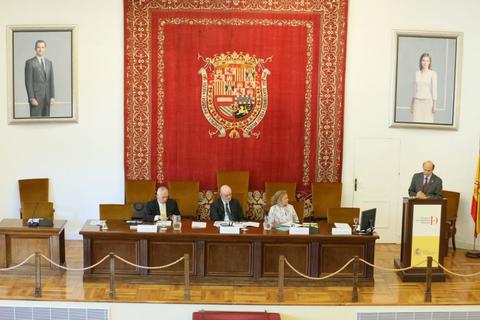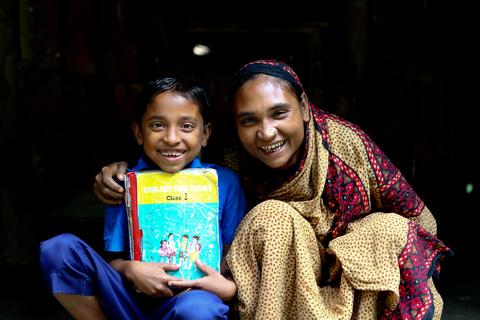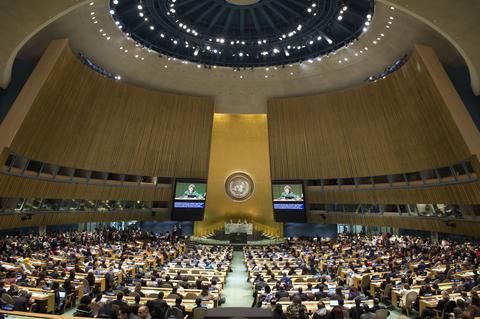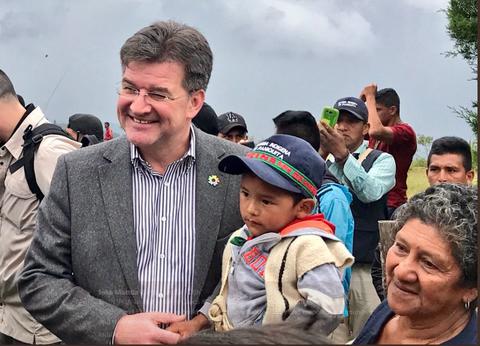October 7, 2016
One year in, how the SDGs are taking shape
As the groundwork for the new development agenda and its complicated lexicon, takes shape in every sector and part of the globe, companies are sharing their own roadmap for acting on the SDGs. Small and large firms are coalescing around their strategies, whether it be through their core business, corporate social responsibility or philanthropic activity.
How companies can actually put the Sustainable Development Goals in practice has continued to be one of the key challenges for firms working to integrate sustainability in their supply chain, in their reporting, and as an overarching component of their corporate culture.
It’s been almost a year since the onset of the new Sustainable Development Agenda and the accompanying 17 development goals, and the good news is that companies are demonstrating a range of proactive activities and actions. Measuring and financing the 230 indicators and 169 targets behind the SDGs may be daunting, but at the same time the goals seem to offer something for everyone.
By breaking down the 17 goals to meet the needs of each each company, the SDGs can be firmly adapted to showcase clear and meaningful targets and plans.
What’s needed now is to allow for companies to build on their own internal systems of management, key performance indicators and methodologies. Smart companies also see the benefit in building stronger community relations, fostering employee engagement, and continuous learning.
Consider companies like Sahara Group, BBVA Foundation, Ebro Foods, Ardilla Lulle, Ferrovial, Nutresa, and H&M, which collaborate with the SDG Fund, and serve as part of our global private sector advisory board to help guide the fund in how the United Nations can better engage with businesses in addressing the SDGs.
For example, when the Sahara Group began its operations in 1996, the company’s focus was based on the traditional business values of profit maximization and shareholder value creation. But over the last five years, the power and energy company has evolved to focus less on profit maximization and more on shareholder value creation. As such they have focused on aligning their strategic priorities with the SDGs, all of which are linked to their core business principles – focusing on people, conduct, society and environment.
It’s important that firms like those that are part of the SDG Fund advisory group are using the SDGs as a clear chart to plot specific projects against. Like other firms eager to shift to a longer-term focus on sustainability, they have been quick to see the value of establishing partnerships to work on the systemic challenges highlighted by the SDGs.
The recent launch of the Food Africa Project is an important example of cross sector collaboration, in this case between the United Nations Sustainable Development Goals Fund, the Sahara Group, U.N. agencies such as Food and Agriculture Organization, International Labor Organization and the International Trade Centre, Kaduna State Government and famed chefs, the Roca Brothers. The program, which was started in Nigeria, will provide greater training to rural farm communities to prevent food losses (postharvest losses are often as high as 70 percent), boost storage and improve harvesting techniques.
As part of this initiative, a center of excellence will look at the entire food value chain — the farmer, wholesaler, retailer and consumer — using an integrated value chain approach to help smallholder farmers obtain new skills and techniques to increase productivity.
And there are other examples. In the Colombian Massif, which is home to the country’s most important watershed and one of the largest fresh water reserves in the equatorial region, the SDG Fund is working with local administration, community boards, indigenous rural representatives, including Ferrovial, to develop protection plans for the watershed and surrounding forests.
Ferrovial, a global services and infrastructure firm, is able to provide reliable, affordable and sustainable access to water and sanitation services for the community as part of the efforts to reduce deforestation and the deterioration of water sources in the region.
Looking forward, the SDG Fund is eager to work with more private sector companies who understand the business opportunities inherent in the SDGs. Our private sector advisory board has embraced the SDGs. The companies have worked closely with their global teams, and developed programs with the people who will be accountable for the implementation and achievement of relevant targets, both at the functional level and through their regional businesses.
The planning challenge of the SDGs can be reflected in the remarks of Rebecca Grynspan, secretary-general of the Ibero American Conference who recently said: “We often forget that short term and long term begin at the same time.”
While the starting point for the goals must begin in the short term, and be internally driven, companies need only look outward to the global challenges of climate change, food insecurity and water scarcity to see the importance of tackling these issues as part of their long-term strategies. This means working to build new business models, and in many cases collaborating within their industry on systemic issues, which we have seen in the pharmaceutical and agriculture sectors.
Less than a year into implementation of SDGs, at the SDG Fund, we have learned a great deal from working with the private sector. Namely, companies want to be brought into the design process. They also want to create programs that align with their core business or optimize their business to become more resilient.
We have seen companies themselves raising awareness about the relevance of the SDGs and how their investments and missions fit into SDG priorities. In fact, often it is the private sector that has pioneered new ideas, implemented multistakeholder programs and prompted other companies (even competitors) to take action. Companies don’t need to dismantle what they have initiated in various parts of their business or CSR lines, but can build on those efforts.
In the next 14 years, with this growing energy from the private sector, it is not only what companies do, but what companies don’t do linked to the SDGs that will be critical. Businesses are looking to tackle challenges collectively and for opportunities to come to the table with U.N. agencies. Companies know they must adapt and take the lead in embedding the SDGs in their firm’s missions, but local and national partners can help design solutions together.
About the author
Paloma Duran is currently the director of the Sustainable Development Goals Fund and has served as the acting director since October 2014. Prior to to the SDG Fund, she was the senior adviser to the Millennium Development Goals Fund. She holds a master's and Ph.D. in law as well as in political science from UNED University in Spain and a certificate in international affairs from New York University in New York.

